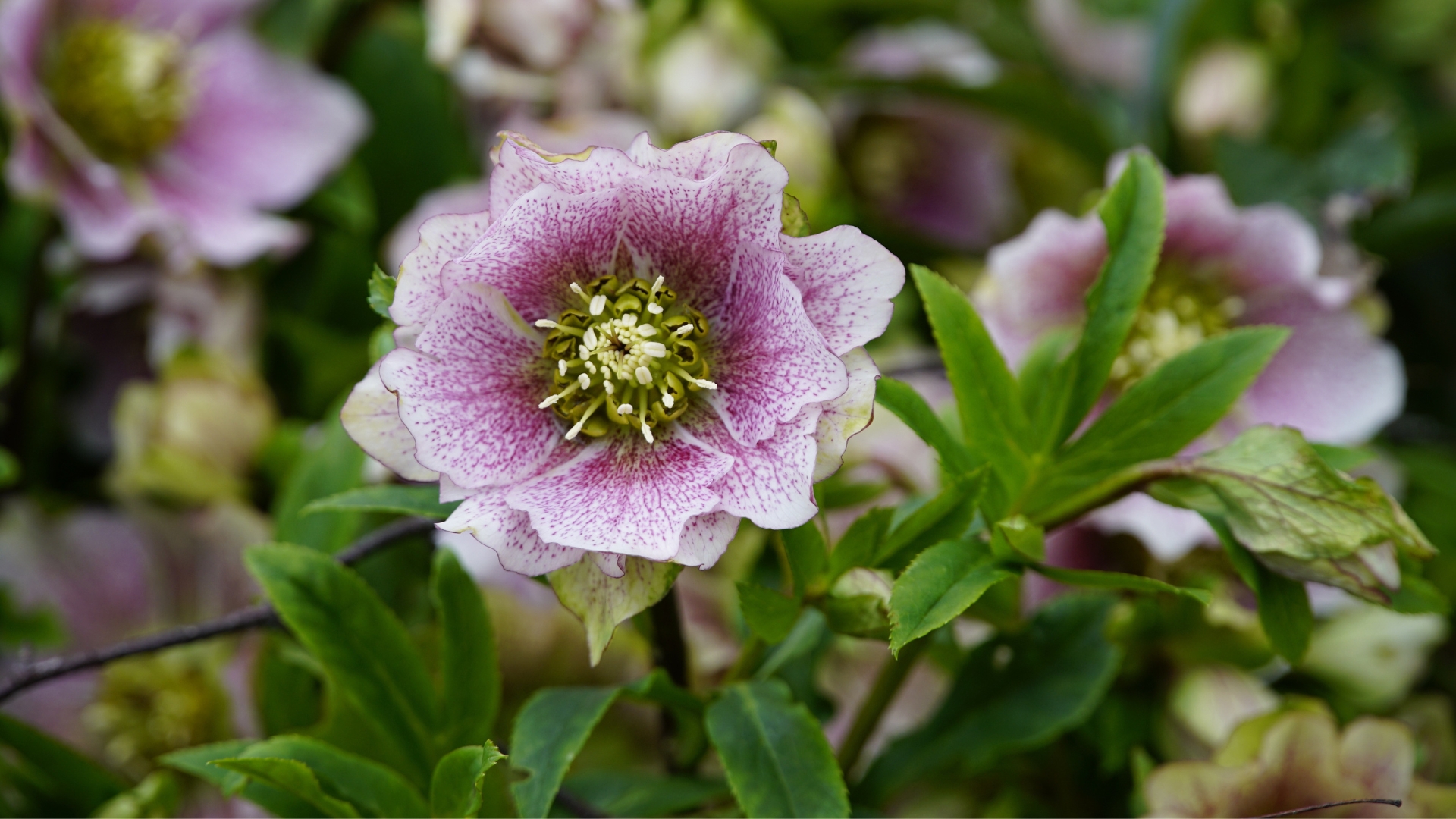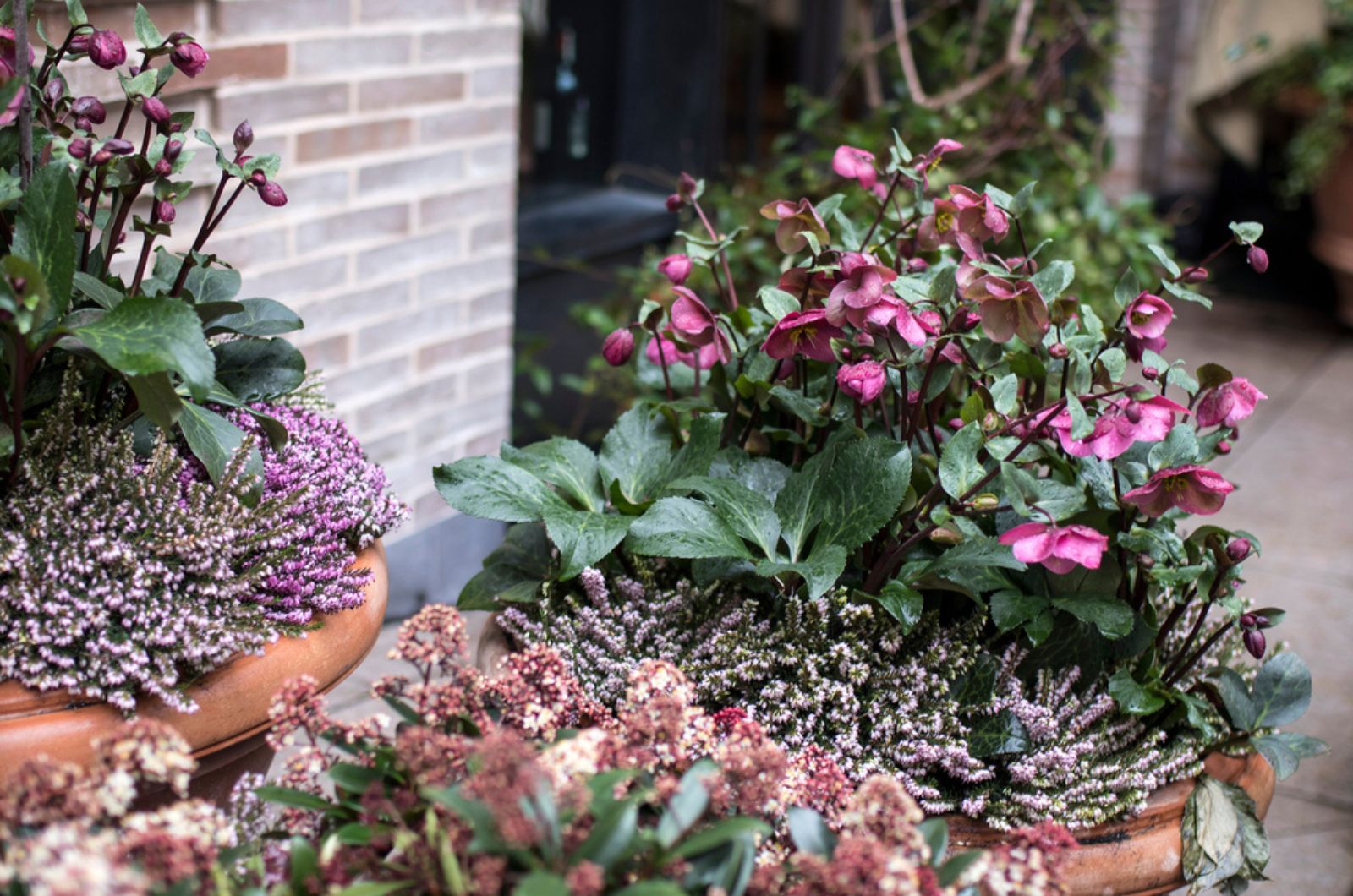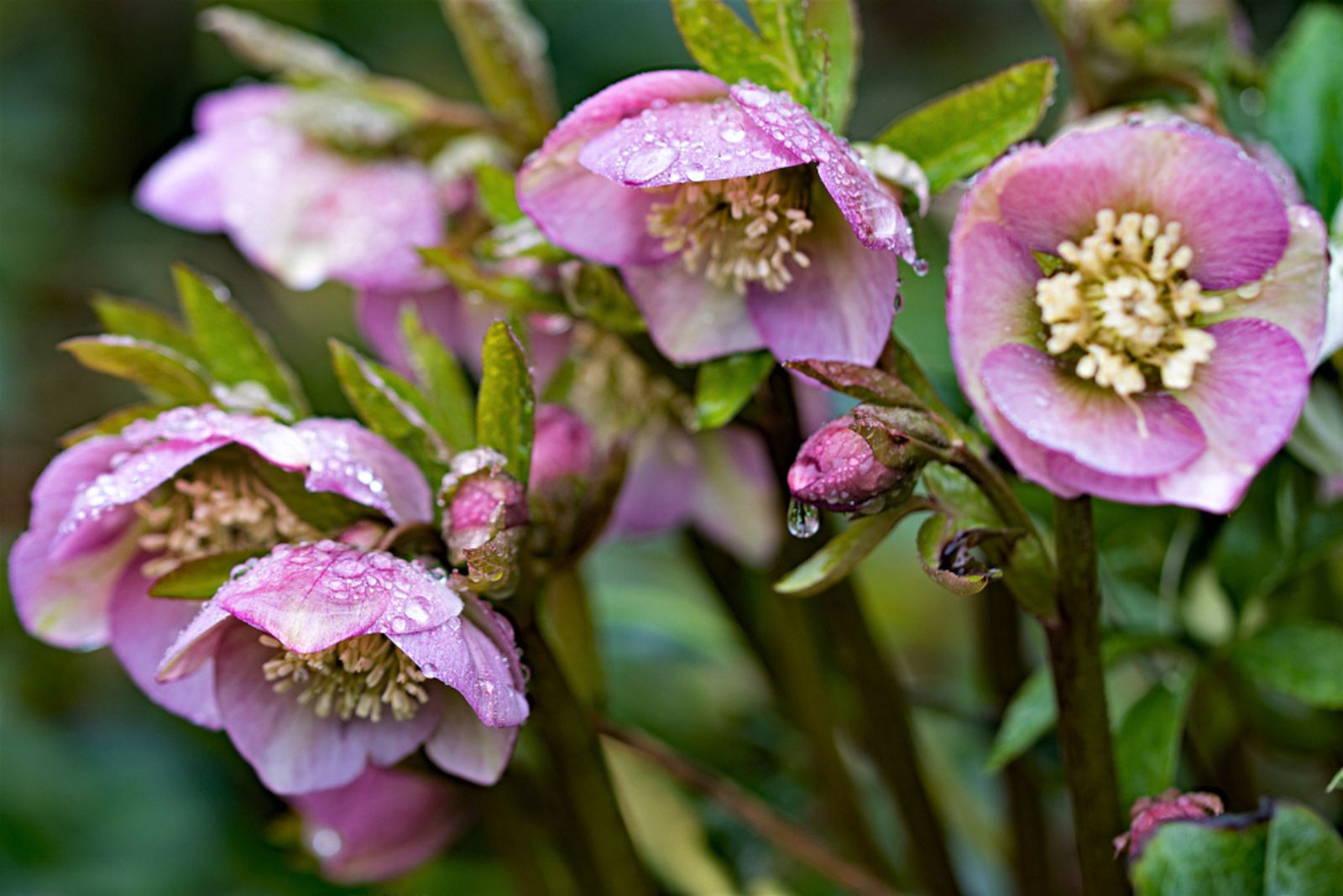Planning to grow hellebores in your garden? If so, then you’ve come to the right place.
Before you start with the planting process, you will have to find the best spot for your delicate hellebore. Soon, your garden will be filled with colorful flowers, including pink, green, purple, and white ones!
What’s great with hellebores is that you can use them in so many different ways – in a container such as a window box, or as a border plant!
But remember, good location is the key to a thriving hellebore. Keep reading to discover the right places with enough sunlight, good soil, and great companions for your hellebores to bloom beautifully in the garden.
The Right Place To plant Hellebores
Different hellebore varieties have different requirements, so it’s important to know what type of hellebore you are dealing with. They are all hardy in USDA zones 3 through 9, so I bet you’ll find one that suits your needs.
These lovely flowering plants grow best in partial shade and well-draining soil that is also rich in nutrients. So, a good option would be to plant them under larger shrubs or trees, or even in a woodland garden.
Helleborus niger, otherwise known as the Christmas rose, is the perfect choice for those who want to make their gardens more festive and vibrant during the holiday season.
Even if your backyard is dry and open, you can still consider growing hellebores – a variety called Helleborus argutifolius is a drought-tolerant plant that can adapt to growing in full sun.
Since there are many hellebore varieties out there, you should always check the label to see if it is a shade-loving kind. Those with silver-gray leaves are often not so keen on shaded areas.
But if you are looking for more flowers to add to your winter garden, make sure to check: 25 Gorgeous Flowering Plants That Bloom In Winter
Can You Grow Hellebores In Containers?
Yes, hellebores can be grown in containers. In fact, they can be grown in pots for a couple of years. However, you should also think about where you are going to put your container hellebore.
Find the perfect soil mix with proper drainage – sand, grit, or mulch are good options. Fill the container with the mixture and plant your hellebore. Containers dry out quickly, so you might need to water them even during the winter season.
Put container hellebores close to your home once you notice that they’ve started blooming. In late spring, you can repot them in the garden after the flowers fade (this is optional).
A good variety for container growing is Helleborus frostkiss “Molly’s White” – it has beautiful white-green flowers with stunning foliage.
Related: 17 Gorgeous Perennials to Transform Your Shaded Garden
How To Care For Hellebores
We’ve already mentioned that they can grow in shady areas with well-draining soil. Once they are established, hellebores require little to no maintenance, especially if you are growing the most hardy varieties.
You should water them only when the soil feels dry during the winter season. Move container hellebores away from direct sunlight exposure as the temperature starts to rise.
If you are growing them in borders, you can improve the soil and promote growth by adding an organic mulch or leaf mold.
Selecting a location for your hellebores in the garden is essential because most of them can naturalize, which means the plant will survive and reproduce on its own without human intervention.
Prune them in late winter to make the flowers more visible and enjoyable. Trim leaf stems close to the ground, making sure not to cut or harm any newly blooming flowers.
By doing this, the foliage from the previous year will be removed, allowing the hellebore blossoms to be the center of attention!
Also read: 6 Gorgeous Plants That Bloom In January



